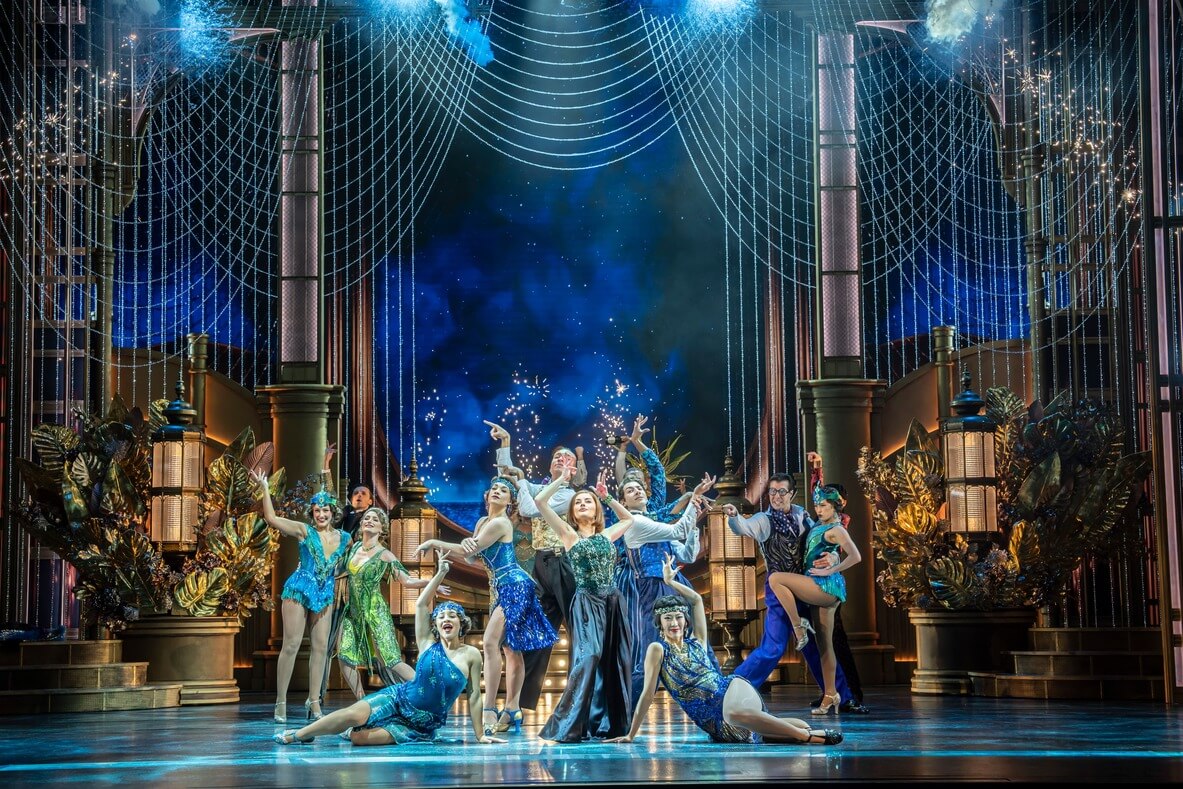First up, was THE WEATHERING (4 stars) — a pastel-shaded candy concoction, during which a troupe of 11 dancers complete four sections beneath Dan Scully’s 10, 16, 24 and then 38 suspended Chinese lanterns, which lend eerily romantic atmospherics to the dimly lit stage. Kyle Abraham’s choreography is not restricted by either sexual stereotypes nor standard dance synchronicity, but in this piece, it isn't always immediately obvious when the latter's absence is intentional or results from a lack of rehearsal. Whilst it was the longest piece, it was not perhaps the tightest, however the addition of modern street dance elements in many of the moves, meant that it more than earned its place on the illustrious stage, despite the minimal nod at narrative theme.
SOLO ECHO (5 stars) — Among the crop of exceptional dance choreographers working today, Crystal Pite remains at the forefront of articulating energetic and beautiful work which emphasises the discipline’s strength and precision in evocative storytelling. As the piece begins, flakes fall and are illuminated by means of lights from the wings across the stage which are gradually lowered until they reach the first male dancer. The piece (originally developed in 2012 for the Nederlands Dans Theater) set to Brahms’ Sonata for Cello and Piano in F Major sees the troupe of 7 dancers — clad in black trousers and waistcoats — perform the two sections each with remarkably differing essences. The first offers the dancers an opportunity to display their vibrant, youthful individuality whilst the second takes on a far darker and more ominous feel as they repeatedly combine into a primordial single entity whose head continually changes as each dancer takes the lead. The phenomenal interconnectedness of the group speaks volumes about the choreography and the rehearsal process necessary to present a piece with such power and intensity.
The final piece DGV: DANSE À GRANDE VITESSE (2 stars) seemed a bizarrely ropey affair with which to end, possessing miss-matched costumes, set, music and choreography. Michael Nyman’s 1993 musical construct conjured for the opening of Lille’s TGV high-speed train service is distinctly at odds with Christopher Wheeldon’s choreography which was full of classical nods performed by four couples (supported by a troupe of youngsters) on Jean-Marc Puissant’s bizarre stage with half-submerged metal plates resembling the fuselage of a crashed airliner! It was a car crash (meets plane crash interwoven with a train wreck), not helped by several badly landed dance lifts and a sea of flailing arms, the owners of which had evidently skipped rehearsals that day.
A very mixed offering, but evidence that dance as an art form remains an important and vital medium for exploring life, love, death and humanity at a time when all four are under threat as never before.

 One of the more perverse and unexpected impacts of the pandemic lockdown, has been the reduction in workforce within many sections of the arts, including those departments which support the back office functions for institutions like the Royal Opera House. The hard pushed and over-stretched Press Office team managed to miscommunicate dates for the opening of La Traviata to this particular reviewer, so rather than waste my journey into Covent Garden this past Saturday, I accepted their offer of a house seat to review the ballet triple bill aimed at highlighting the talents of some of the newer bright lights of the dance fraternity. As is usual with such contrived amalgamations, it was an enjoyable but fairly mixed offering, where humanity flirted with death in a three-sectioned, mildly post-apocalyptic pas de deux.
One of the more perverse and unexpected impacts of the pandemic lockdown, has been the reduction in workforce within many sections of the arts, including those departments which support the back office functions for institutions like the Royal Opera House. The hard pushed and over-stretched Press Office team managed to miscommunicate dates for the opening of La Traviata to this particular reviewer, so rather than waste my journey into Covent Garden this past Saturday, I accepted their offer of a house seat to review the ballet triple bill aimed at highlighting the talents of some of the newer bright lights of the dance fraternity. As is usual with such contrived amalgamations, it was an enjoyable but fairly mixed offering, where humanity flirted with death in a three-sectioned, mildly post-apocalyptic pas de deux.

